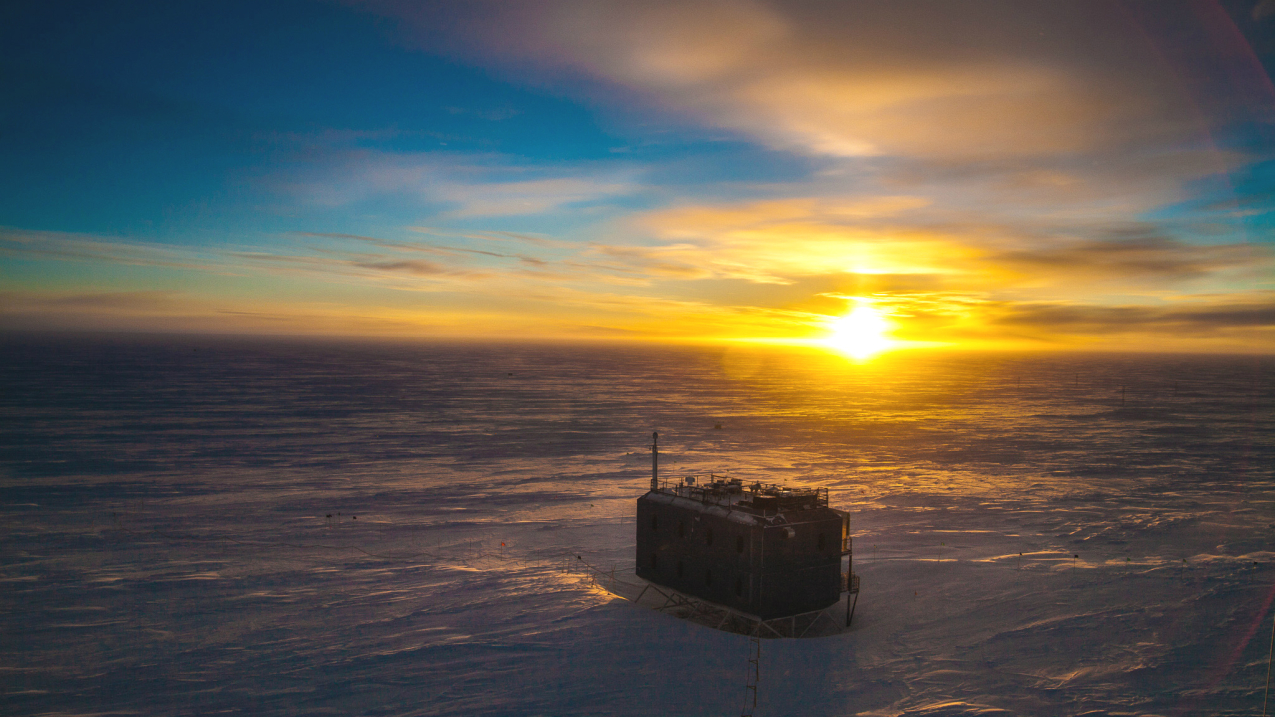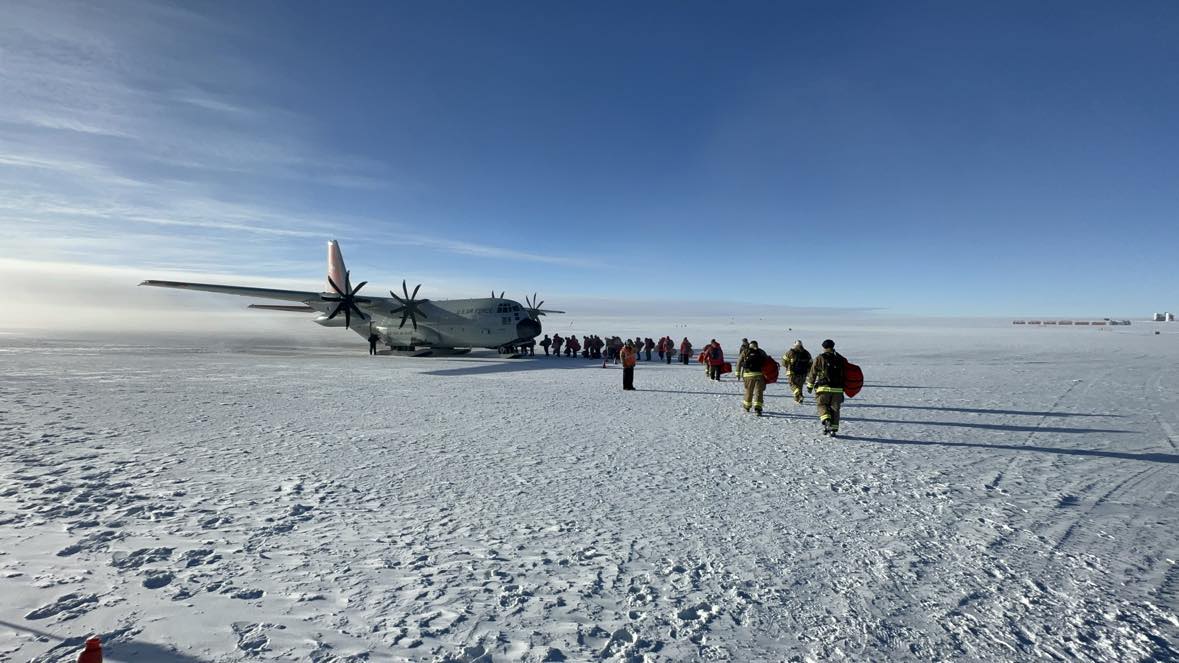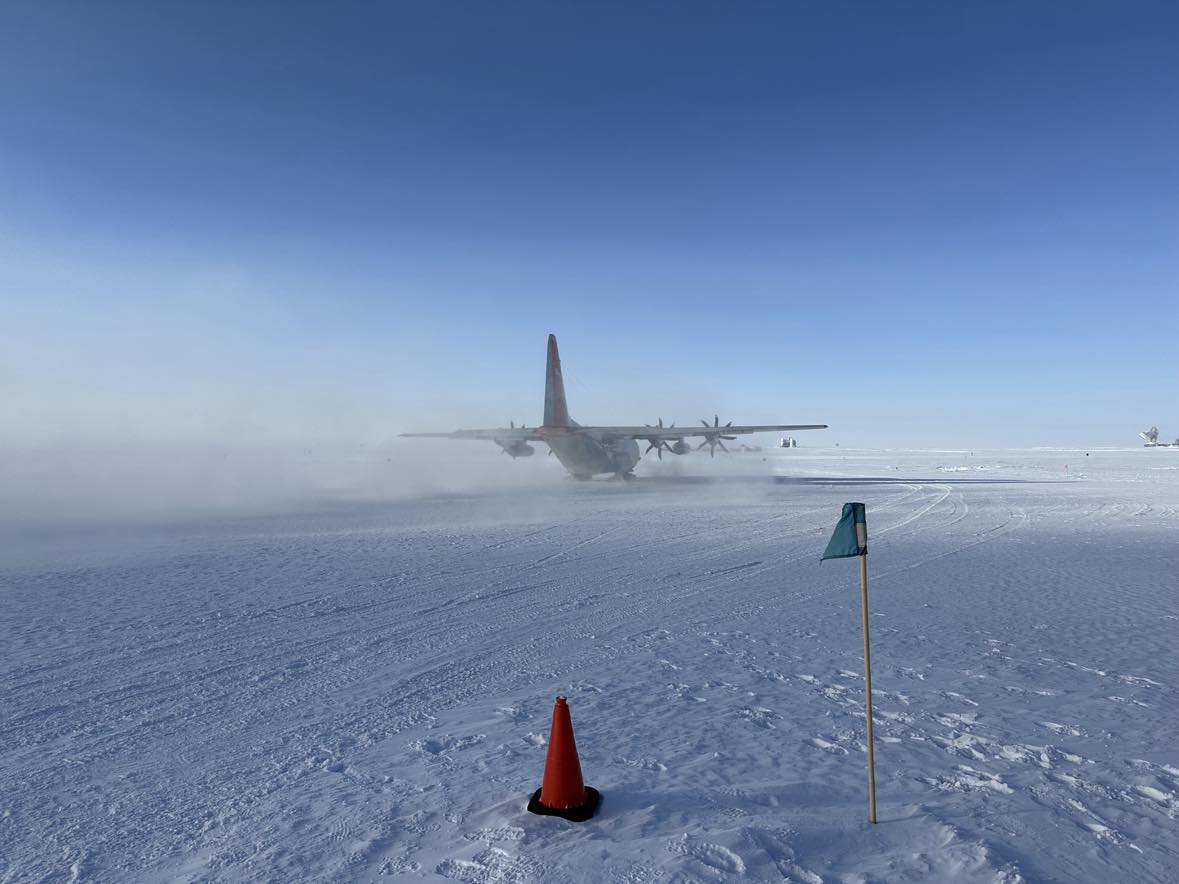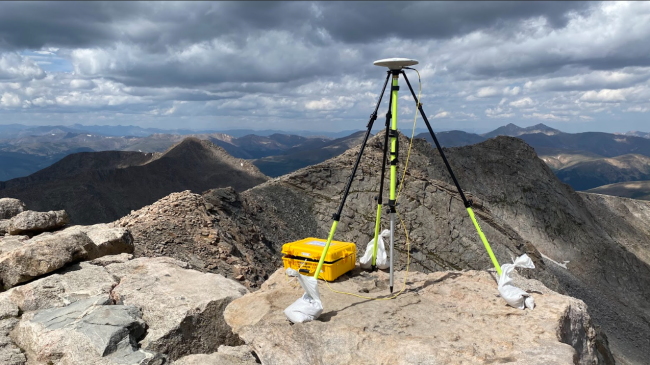NOAA researchers take last flight from South Pole

NOAA's South Pole Observatory. (Image credit: Courtesy of Patrick Cullis/CIRES)
Winter is coming — to the South Pole.
In mid-February, scientists and staff working at Amundsen Scott Station in Antarctica — including researchers from NOAA — boarded a specially equipped Air National Guard C-130 for the last scheduled flight for nine months.
During the South Pole winter season, it gets so cold that hydraulic lines and other mechanical systems freeze, making air travel there hazardous.
The below photographs were taken by NOAA Global Monitoring Laboratory station technician Krystian Kopka, who will help continue NOAA’s mission at Amundsen Scott Station throughout the 2024 Antarctic winter.


Want to see conditions in the South Pole right now? Check out the view from this live cam.
Plus: Learn about the work that NOAA does in the South Pole.


